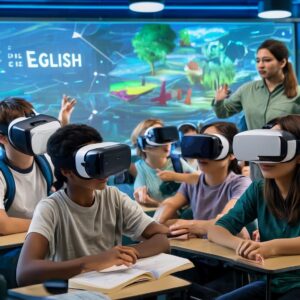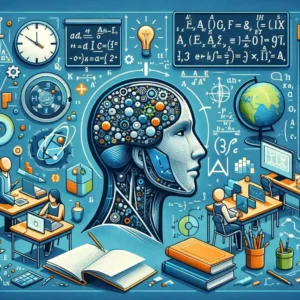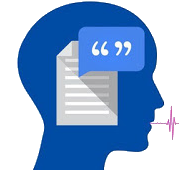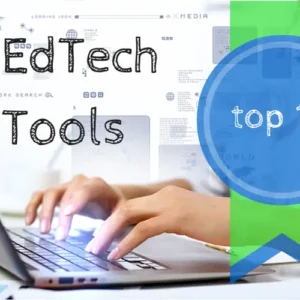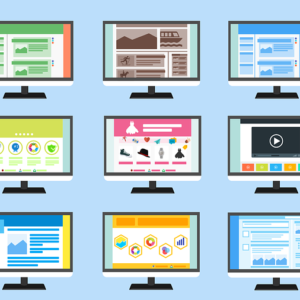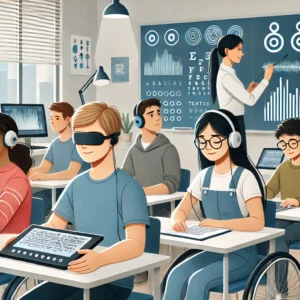Technology is no longer just a tool—it’s a transformative force reshaping how we teach, learn, and engage. From AI-powered tutors to immersive virtual classrooms, educators are embracing innovative tech practices to make learning more personalized, interactive, and accessible than ever before. Here are the ten trendiest practices related to using technology in education.
“The best tools enhance pedagogy—they don’t replace great teaching.”
1. AI-Powered Personalized Learning
Artificial Intelligence is revolutionizing education by adapting content to individual student needs. Platforms like Khanmigo and Century Tech use AI to analyze learning patterns, recommend tailored exercises, and provide real-time feedback. Teachers can identify knowledge gaps faster, while students receive customized learning paths—making one-size-fits-all instruction a thing of the past.
👉 Try it: Khanmigo for Educators
2. Gamification with Learning Apps
Who says learning can’t be fun? Gamified platforms like Kahoot!, Quizizz, and Classcraft turn lessons into engaging games. Leaderboards, badges, and rewards motivate students while reinforcing key concepts. Educators report higher engagement and retention when students “level up” through math problems or history quizzes.
👉 Get started: Kahoot! in the Classroom
3. Immersive Learning via VR and AR
Virtual and Augmented Reality are bringing abstract concepts to life. Imagine students exploring the human circulatory system from inside a 3D heart or walking through ancient Rome—all from their classroom. Tools like Google Expeditions (now part of Google Arts & Culture) and Merge EDU are making immersive learning more accessible, especially in STEM and history subjects.
👉 Explore: Merge EDU Lesson Library
4. Flipped Classrooms with Video Content
The flipped classroom model continues to thrive, with teachers using tools like Edpuzzle and Screencastify to create short, interactive video lessons. Students watch lectures at home and use class time for hands-on projects, discussions, and problem-solving—fostering deeper understanding and active learning.
👉 Create your first video lesson: Edpuzzle Teacher Guide
5. Learning Management Systems (LMS) with Analytics
Platforms like Google Classroom, Canvas, and Schoology are now more than digital assignment hubs. With built-in analytics, teachers can track student progress, monitor engagement, and intervene early when someone is struggling. These systems also streamline communication between teachers, students, and parents.
👉 Compare LMS options: EdSurge LMS Product Guide
6. Collaborative Tools for Real-Time Learning
Tools like Microsoft Teams for Education, Jamboard (note: being sunset in 2024; migrate to Google Workspace whiteboarding tools), and Padlet enable real-time collaboration regardless of location. Students can co-edit documents, brainstorm ideas on virtual walls, or present projects via video conferencing. This is especially powerful in hybrid or remote learning environments.
👉 Try Padlet for free: Padlet Education
7. Digital Portfolios and E-Showcases
Students are using platforms like Seesaw, Flip (formerly Flipgrid), and WeVideo to create dynamic digital portfolios. These multimedia collections showcase growth over time and allow students to reflect on their learning journey—perfect for student-led conferences and college applications.
👉 Start a Seesaw class: Seesaw Setup Guide
8. Chatbots and Virtual Teaching Assistants
AI chatbots like those integrated into LMS platforms or school websites answer common student questions 24/7—about assignments, deadlines, or resources. This frees up teacher time and supports students with instant, on-demand help. Some schools are even using Chatbot.com or custom AI assistants via Google Dialogflow.
👉 Learn more: AI in Education: Virtual Teaching Assistants
9. EdTech for Social-Emotional Learning (SEL)
Technology isn’t just for academics. Apps like ClassDojo and GoNoodle integrate SEL into the school day with mindfulness exercises, emotion check-ins, and behavior tracking. These tools help build emotional intelligence and foster a positive classroom culture.
👉 Explore SEL activities: ClassDojo Big Ideas
10. Blockchain for Academic Credentials
While still emerging, blockchain technology is being piloted to securely store and verify academic credentials. Universities and schools are experimenting with digital diplomas and micro-credentials that students can share instantly with employers or other institutions—reducing fraud and streamlining admissions. Platforms like Learning Machine (now part of Hyland Credentials) and Sony Global Education’s Blockchain are leading the charge.
👉 See a real-world example: MIT’s Digital Diplomas
Final Thoughts
The fusion of education and technology is no longer optional—it’s essential. These trendiest practices aren’t just about flashy gadgets; they’re about creating inclusive, student-centered learning experiences that prepare learners for a digital future.
But remember: the most effective tech integration is purposeful, not just trendy. The best tools enhance pedagogy—they don’t replace great teaching. As educators continue to innovate, the focus must remain on empowering students, deepening understanding, and fostering lifelong curiosity.

